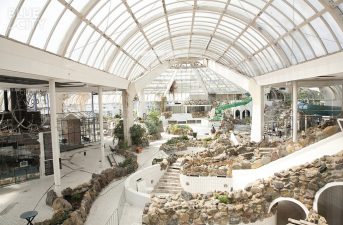 Diversifying away from oil Yemen plans to build six beach resorts over the next five years to draw tourists. How much will be sustainable?
Diversifying away from oil Yemen plans to build six beach resorts over the next five years to draw tourists. How much will be sustainable?
The Yemen Tourism and Promotion Board announced the plan on Thursday to boost the country’s tourism industry. Each of the planned six facilities along the Yemeni coast is valued at $150 – $250 million. In addition, 44 small-to-medium-sized projects across the country’s mountainous interior will be built, ranging from three-star hotels to mud and stone huts.“I’m inviting potential investors to invest in the Yemen tourism sector as we have six major projects in the pipeline approved by the government,” said Omar Babelgheith, Yemen’s deputy minister of tourism development.
The projects “will change the image of Yemen tourism,” he said. The total amount of all the projects is estimated at $1bn said Babelgheith, “which will contribute to support Yemen as one of the main destinations of the world.”
“Yemen has been trying to diversify its economy from oil,” Ginny Hill, Project Leader of the Yemen Forum at Chatham House, told The Media Line. “Tourism has been indentified as one possible sector.”
“However, unless the security situation improves then Yemen will struggle to attract tourists,” she warned.
Yemen’s dire economic condition is often cited by regional experts as a major cause behind the country’s chaotic political situation. “There are some obvious problems and some not so obvious ones,” Dr. Stephen Steinbeiser, resident director of the American Institute for Yemeni Studies in Sana’a, told The Media Line.
“The obvious area being security,” he said. “The given picture is that Yemen is an unstable place but parts of the country are relatively stable, such as [the capital] Sana’a and the port city Aden.”
“Daily routine continues on a regular basis and most people don’t encounter that type of violence,” Steinbeiser said, referring to a suicide bomb attempt on the British ambassador last month.”
“Until … foreign tourists can travel freely I don’t think there will be an increase of tourists,” he added.
The central government in Sana’a has been fighting with a militant group, belonging to an offshoot of Shi’a Islam known as the Al-Huthi rebels, in the northeast of the country since 2004.
In addition, the government is fighting a secessionist movement in the south, which accuses the government of unfairly diverting the south’s oil wealth. The movement is also calling for a return to the two-state division, in place before Yemen gained independence in 1967.
For the past two years, there have been increasing fears that Al-Qa’ida in the Arabian Peninsula is taking advantage of Yemen’s unstable political situation to strengthen its presence in the region.
The fighting in the north has displaced an estimated quarter of a million people. Humanitarian aid is needed for them as well as many Somali refugees who have fled to Yemen as a transit station on their way to reach the wealthy Gulf countries.
However, despite these negative developments, revenue from tourism grew by 2 percent to $903 million in 2009 compared to 2008, according data from the Yemeni Ministry of Tourism.
The United States Department of State currently has a travel warning in place for Yemen stating that it “warns U.S. citizens of the high security threat level in Yemen due to terrorist activities. The Department recommends that American citizens defer non-essential travel to Yemen.”
Yemen’s Environmental Problems Based On Chewing Gat
Yemen Funnels Seawater to Drinking Water With Low-tech Watercone
Eco-tourism Hot Spots in Yemen
(This story was first printed in the Mideast News Source, The Media Line. Image via yeowatzup.)



